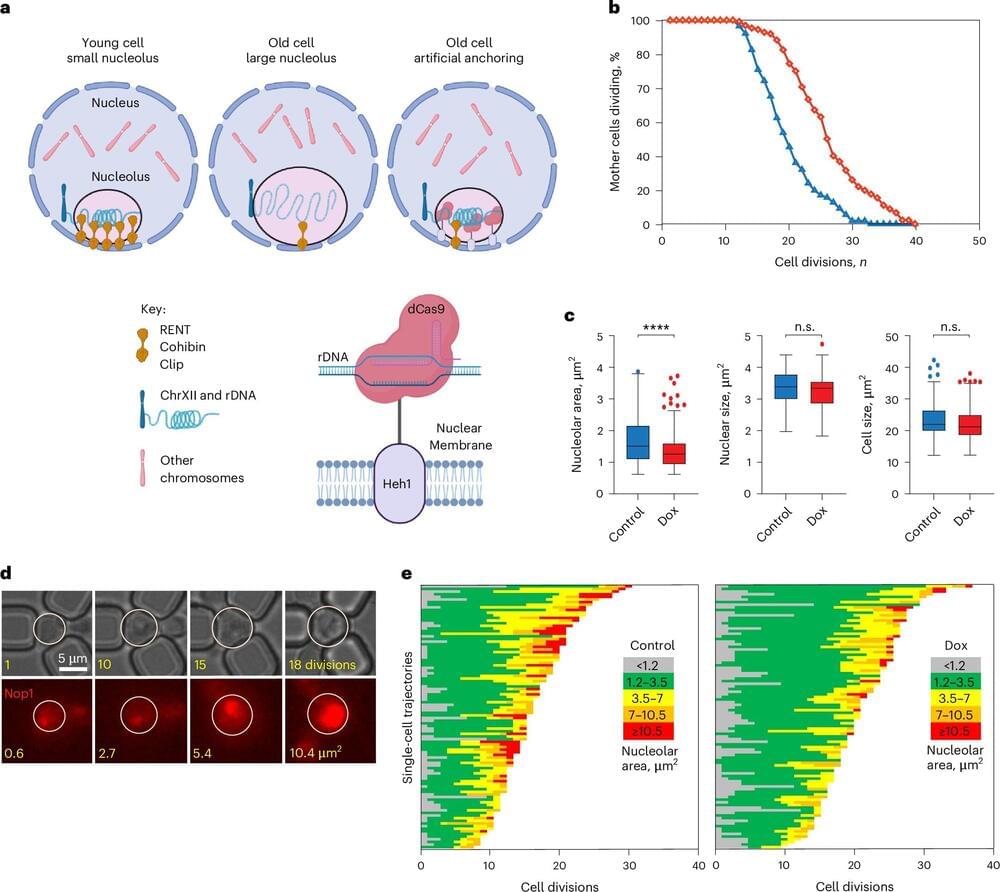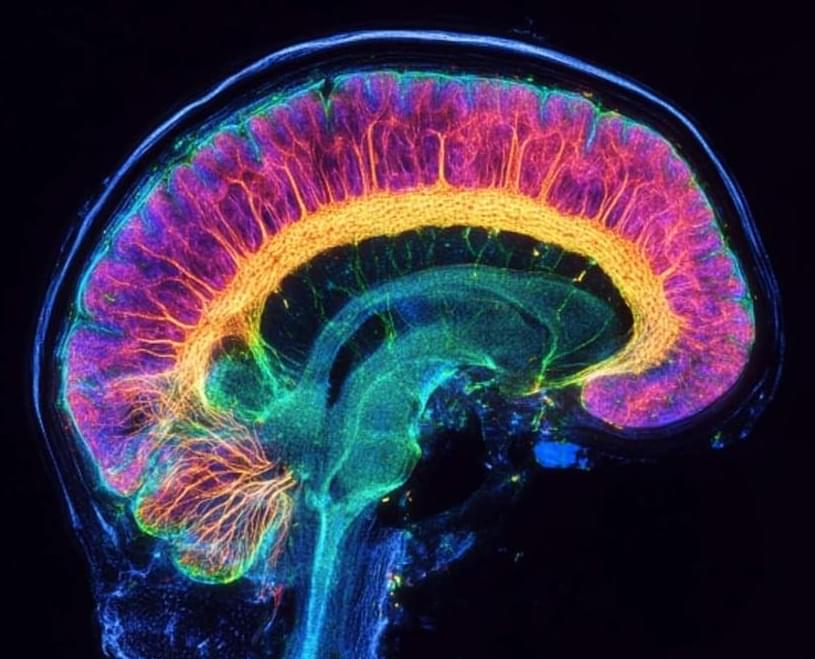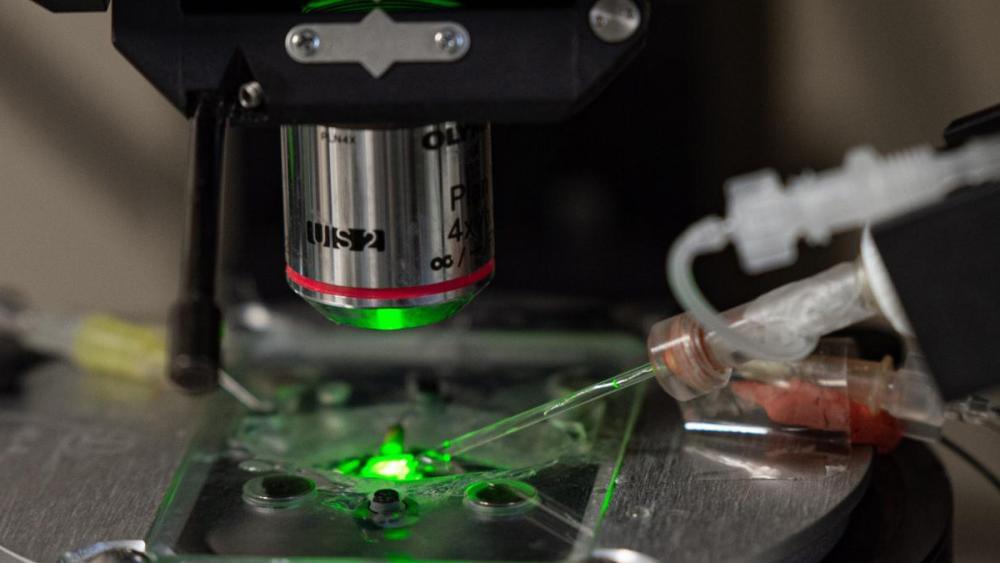A nasal spray drug can counteract the cognitive decline and brain damage typical of Alzheimer’s disease in animal models.


“Life is incredible.” Here’s how a brain implant changed the life of Jon Nelson, who long suffered from severe depression. Now a patient advocate for startup Motif, he spoke to Emily Chang about the hope of using neurotech to treat mental illnesses.
——-
Like this video? Subscribe: https://www.youtube.com/Bloomberg?sub_confirmation=1
Get unlimited access to Bloomberg.com for $1.99/month for the first 3 months: https://www.bloomberg.com/subscriptions?in_source=YoutubeOriginals.
Bloomberg Originals offers bold takes for curious minds on today’s biggest topics. Hosted by experts covering stories you haven’t seen and viewpoints you haven’t heard, you’ll discover cinematic, data-led shows that investigate the intersection of business and culture. Exploring every angle of climate change, technology, finance, sports and beyond, Bloomberg Originals is business as you’ve never seen it.
Subscribe for business news, but not as you’ve known it: exclusive interviews, fascinating profiles, data-driven analysis, and the latest in tech innovation from around the world.
Visit our partner channel Bloomberg Quicktake for global news and insight in an instant.

The secret to cellular youth may depend on keeping the nucleolus—a condensed structure inside the nucleus of a cell—small, according to Weill Cornell Medicine investigators. The findings were elucidated in yeast, a model organism famous for making bread and beer and yet surprisingly similar to humans on the cellular level.
The study, published Nov. 25 in Nature Aging, may lead to new longevity treatments that could extend human lifespan. It also establishes a mortality timer that reveals how long a cell has left before it dies.
As people get older, they are more likely to develop health conditions, such as cancer, cardiovascular disease and neurodegenerative diseases.

Summary: Researchers have developed a new method to profile gene activity in the living human brain, offering new insights into neurological conditions like epilepsy. By analyzing RNA and DNA collected from electrodes implanted in patients’ brains, the study linked molecular data with electrical recordings of seizures, creating a detailed snapshot of gene activity.
This approach enhances understanding of seizure networks, potentially improving the precision of epilepsy surgeries for patients who don’t respond to medication. Beyond epilepsy, the method could have applications in studying Alzheimer’s, Parkinson’s, and schizophrenia, advancing knowledge of brain disorders at the molecular level.
Ed Boyden is a professor at the MIT Media Lab working on the most advanced brain-computer interfacing technology currently available, optogenetics. At Singularity Summit 2009.

The current standard of care for psychosis is a diagnostic interview, but what if it could be diagnosed before the first symptom emerged? Researchers at the Del Monte Institute for Neuroscience at the University of Rochester are pointing toward a potential biomarker in the brain that could lead to more timely interventions and personalized care.
“Establishing such biomarkers could provide a key step in changing how we care for, treat, and offer interventions to people with psychosis,” said Brian Keane, Ph.D., assistant professor of Psychiatry, Center for Visual Science, and Neuroscience at the University of Rochester Medical Center.
Keane recently co-authored an article in Molecular Psychiatry that identifies how MRI scans could reveal brain differences in people with psychosis.
Neuroscience aficionados may enjoy my preprint that compares leading imaging technologies for whole-brain mammalian connectomics, now with major updates/improvements: Link: arxiv.org/abs/2405.
Mammalian whole-brain connectomes at nanoscale synaptic resolution are a crucial ingredient for holistic understanding of brain function. Imaging these connectomes at sufficient resolution to densely reconstruct cellular morphology and synapses represents a longstanding goal in neuroscience. Although the technologies needed to reconstruct whole-brain connectomes have not yet reached full maturity, they are advancing rapidly enough that the mouse brain might be within reach in the near future. Detailed exploration of these technologies is warranted to help plan projects with varying goals and requirements. Whole-brain human connectomes remain a more distant goal yet are worthy of consideration to orient large-scale neuroscience program plans. Here, we quantitatively compare existing and emerging imaging technologies that have potential to enable whole-brain mammalian connectomics.
From brain implants that allow paralyzed patients to communicate to the wearable devices enhancing our capabilities, brain-computer interfaces could change the way we use our minds forever.
——-
Like this video? Subscribe: https://www.youtube.com/Bloomberg?sub_…
Get unlimited access to Bloomberg.com for $1.99/month for the first 3 months: https://www.bloomberg.com/subscriptio…
Bloomberg Originals offers bold takes for curious minds on today’s biggest topics. Hosted by experts covering stories you haven’t seen and viewpoints you haven’t heard, you’ll discover cinematic, data-led shows that investigate the intersection of business and culture. Exploring every angle of climate change, technology, finance, sports and beyond, Bloomberg Originals is business as you’ve never seen it.
Subscribe for business news, but not as you’ve known it: exclusive interviews, fascinating profiles, data-driven analysis, and the latest in tech innovation from around the world.
Visit our partner channel Bloomberg Quicktake for global news and insight in an instant.
Non-personalized content and ads are influenced by things like the content you’re currently viewing and your location (ad serving is based on general location). Personalized content and ads can also include things like video recommendations, a customized YouTube homepage, and tailored ads based on past activity, like the videos you watch and the things you search for on YouTube. We also use cookies and data to tailor the experience to be age-appropriate, if relevant.
Select “More options” to see additional information, including details about managing your privacy settings. You can also visit g.co/privacytools at any time.

In a new work, a team from the University of Pennsylvania tracked the impact of alcohol consumption from the age of 20 on brain health and came to disappointing conclusions.
UNIVERSITY PARK, Pa. — Binge drinking in early adults can lead to long-lasting and potentially permanent dysregulation in the brain, according to a new study in mice, led by researchers at Penn State. They found that neurons, cells that transmit information in the brain via electrical and chemical signals, showed changes following binge drinking were similar in many ways to those seen with cognitive decline.
These findings, published in the journal Neurobiology of Aging, reveal that binge drinking early in life may have lasting impacts that are predictive of future health issues, like Alzheimer’s disease and related dementias, the researchers said. The work could inform the development of therapeutics to help combat these changes — particularly in aging populations who may have given up alcohol decades earlier, according to Nikki Crowley, director of the Penn State Neuroscience Institute at University Park, Huck Early Career Chair in Neurobiology and Neural Engineering, assistant professor of biology in the Eberly College of Science, and the leader of the research team.
“We know from previous studies that there are immediate effects of binge drinking on the brain, but we didn’t have any sense of if these changes were long-lasting, or reversible over time,” said Crowley, who is also an assistant professor of biomedical engineering and of pharmacology. “We were interested in understanding if binge drinking during early adulthood may have lasting consequences that are not revealed until later in life — even if drinking had stopped for a very long period of time. This allows us to consider the effects of alcohol on an individual’s holistic health, in terms of their entire life history.”